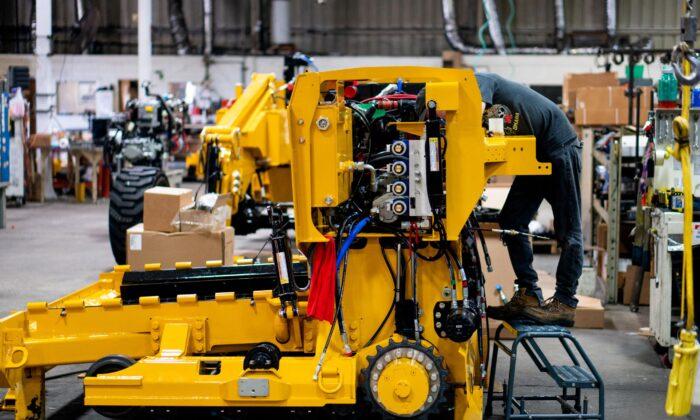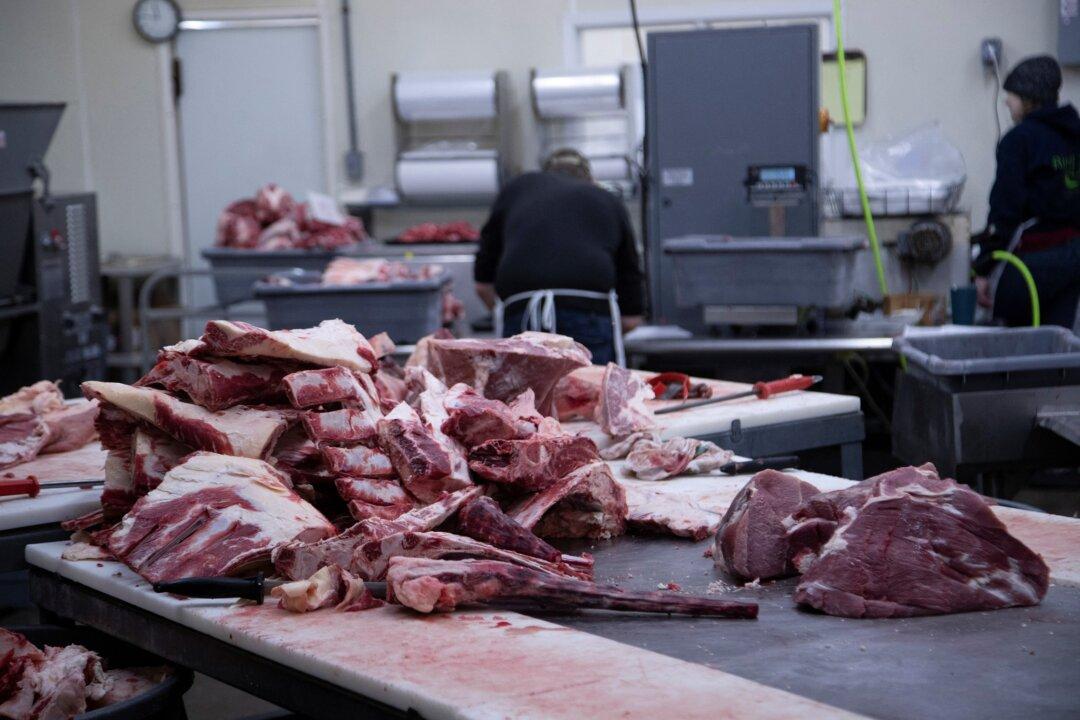WASHINGTON—New orders for key U.S.–manufactured capital goods increased by the most in five months in January while shipments of those so-called core goods rebounded, suggesting that business spending on equipment picked up at the start of the first quarter.
Some of the larger-than-expected rise in core capital goods orders reported by the Commerce Department on Monday, which ended two straight monthly declines, likely reflected higher prices last month. It joined solid consumer spending and robust labor market data in painting an upbeat picture of the economy.
The string of strong data has raised the risk that the Federal Reserve could hike interest rates to a higher level than currently estimated.
“Business orders for new equipment are a key indicator of investment in the economy’s future and it counts as good news that long-lived capital goods are seeing more orders to start the year,” said Christopher Rupkey, chief economist at FWDBONDS in New York. “Orders get canceled if companies see a loss of revenues and sales, and that is not what the data are saying right now even if many CEOs are battening down the hatches and making preparations for recession later this year.”
Orders for non-defense capital goods excluding aircraft, a closely watched proxy for business spending plans, rose 0.8 percent last month. These core capital goods orders dropped 0.3 percent in December. Economists polled by Reuters had forecast core capital goods orders edging up 0.1 percent. Core capital goods orders increased 5.3 percent on a year-on-year basis in January.
The data is not adjusted for inflation. Producer prices for capital goods shot up in January.
The surge in orders is at odds with business surveys that have suggested manufacturing, which accounts for 11.3 percent of the economy, was in recession. Business sentiment soured as the U.S. central bank aggressively raised interest rates.
But demand for goods, which are typically bought on credit, continues to hold up. Government data on Friday showed consumer spending on long-lasting manufactured goods like motor vehicles and household furnishings rebounded sharply in January, helping to boost consumer spending. Data this month from the Fed showed manufacturing production accelerating in January.
“Given the fairly broad strength in this report and the fact that manufacturing activity surprised to the upside in the industrial production data released earlier this month, we can’t completely dismiss this as rebound noise,” said Shannon Seery, an economist at Wells Fargo in New York. “But we still doubt the string of weakness we saw toward the end of last year is the full extent of the contraction for manufacturing.”
Aircraft Orders Plunge
The Fed has raised its policy rate by 450 basis points since last March from near zero to a 4.50 percent–4.75 percent range. It is expected to deliver two additional rate hikes of 25 basis points in March and May, though financial markets are betting on another increase in June.Last month, there were increases in orders for electrical equipment, appliances, and components, machinery, primary metals as well as computers and electronic products.
Shipments of core capital goods bounced back 1.1 percent after declining 0.6 percent in December. Core capital goods shipments are used to calculate equipment spending in the gross domestic product measurement.
Business spending on equipment contracted in the fourth quarter, helping to restrain GDP growth to a 2.7 percent annualized rate. The economy grew at a 3.2 percent pace in the third quarter. Growth estimates for the first quarter are as high as a 2.8 percent pace.
“Business investment appears to have started 2023 on a positive note,” said Oren Klachkin, lead U.S. economist at Oxford Economics in New York.
But orders for items ranging from toasters to aircraft that are meant to last three years or more tumbled 4.5 percent in January, the largest drop since April 2020. These so-called durable goods orders increased 5.1 percent in December.
Orders last month were weighed down by a 54.6 percent plunge in the volatile civilian aircraft category, which followed a 105.6 percent surge in December. Boeing reported on its website that it had received 55 aircraft orders in January, a fraction of the 250 booked in December.
Orders for transportation equipment dropped 13.3 percent after increasing 15.8 percent in December. Motor vehicle orders gained 0.2 percent.
Unfilled orders at manufacturers were unchanged in January after increasing 1.1 percent in December. That suggests less work lined up at factories. There was a reduction inventory, positive news for manufacturing. But this could weigh on GDP growth. Inventory accumulation was the main driver of economic growth last quarter.
The housing market, which has been walloped by tighter monetary policy, is showing signs of finding a floor. But a resurgence in mortgage rates could delay a turnaround.
The National Association of Realtors said in a second report its Pending Home Sales Index, based on signed contracts, jumped 8.1 percent in January, the biggest gain since June 2020.
“However, the recent increase in mortgage rates is probably going to inflict some more pain on the housing market going forward,” said Eugenio Aleman, chief economist at Raymond James in St. Petersburg, Florida.





